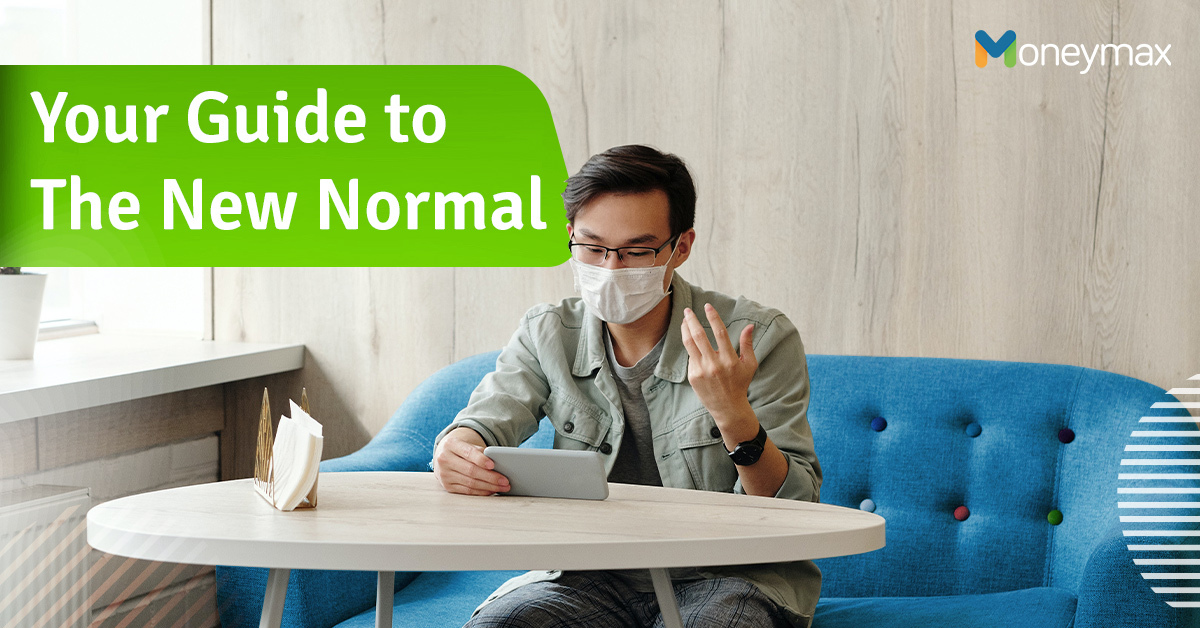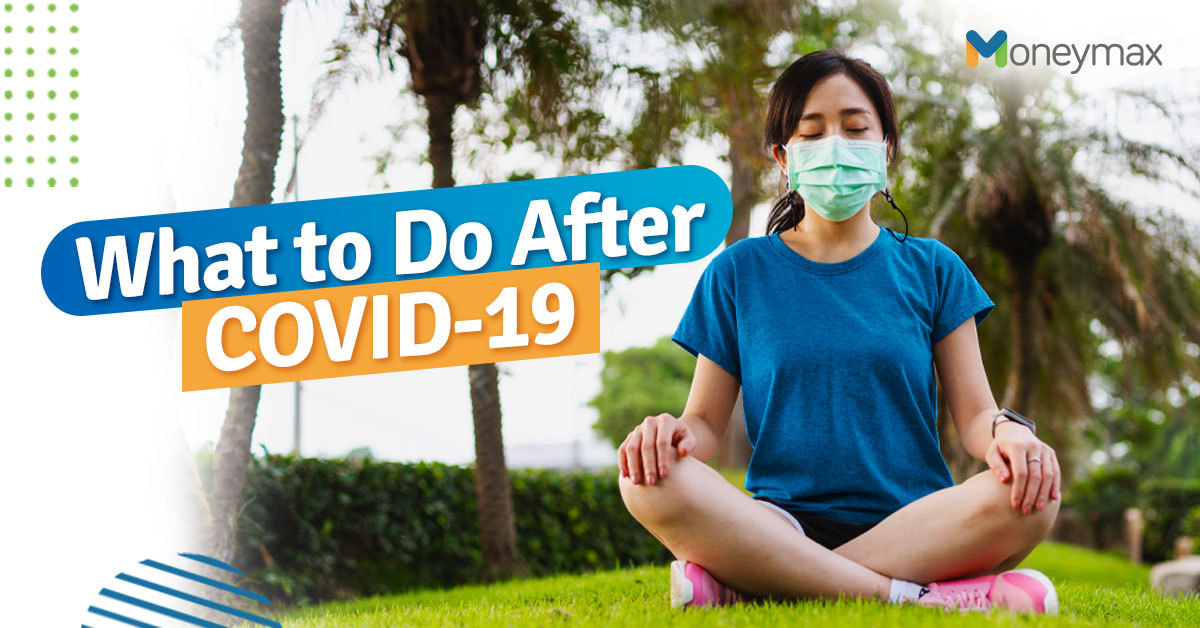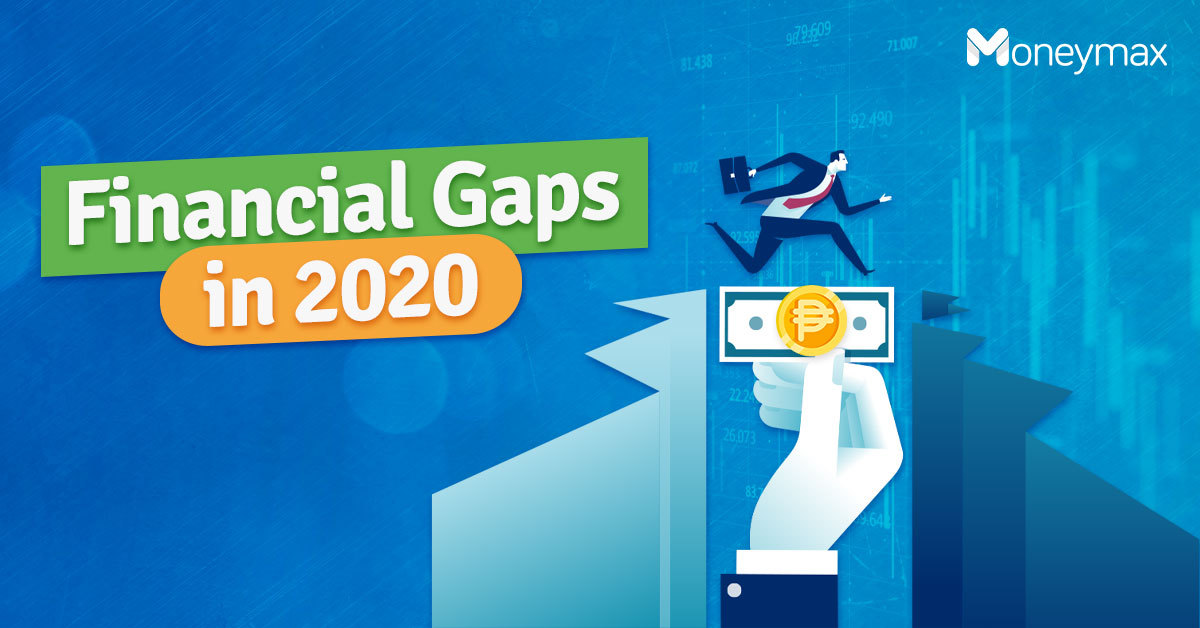The development of coronavirus disease (COVID-19) vaccines is a huge help in the fight against this global pandemic. With a COVID-19 vaccine in the Philippines, people can get protection from severe symptoms that usually lead to hospitalization or death.
As of this writing, there are 1,300,349 COVID-19 cases in the country and a total of 22,507 deaths.[1]
The Philippine government is aiming to achieve herd immunity against COVID-19 by 2023.[2] Herd immunity or community immunity occurs when a high percentage of the community is immune to a disease (through vaccination and/or prior illness), making the spread of this disease from person to person unlikely.[3]
What is the COVID-19 Vaccine?
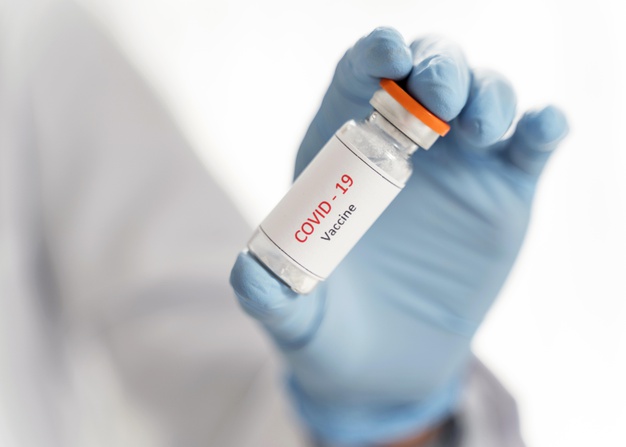
The COVID-19 vaccine provides acquired immunity against severe acute respiratory syndrome coronavirus 2 (SARS-CoV-2), the virus causing COVID-19.
In general, vaccines work by helping your body develop an immunity to germs or viruses. Vaccines mimic these germs and viruses. As a result, your body develops antibodies to fight them off and prevent you from getting sick from it again in the future.
Based on early data from clinical trials, the vaccines can lower your chances of getting COVID-19 and help prevent getting seriously sick with COVID-19.
Is It Safe to Get the COVID-19 Vaccine?
Yes. Even if pharmaceutical companies developed COVID-19 vaccines so quickly, they did not skip any steps, and all the vaccines underwent careful testing.[4] The Food and Drug Administration (FDA) has also granted them emergency use authorization,[5] a risk-based procedure to assess unlicensed vaccines during public health emergencies.
In addition, COVID-19 vaccines are continuously monitored for any problems or side effects that did not happen during the clinical trials. Therefore, the COVID-19 vaccines being rolled out today are considered safe and effective based on currently available data.
Read more: Running List of COVID-19 Testing Centers in Metro Manila
Who Will Get Vaccinated First?
Because of their higher risk of exposure on the job, medical frontliners received the first COVID-19 vaccines in the Philippines. In March 2021, healthcare workers in six Metro Manila hospitals received the Sinovac vaccine.[6] With their COVID-19 vaccination, frontliners can continue doing their jobs while being protected from COVID-19.

As of this writing, vulnerable groups like senior citizens and persons with comorbidities are being vaccinated. If you belong to these priority groups, check where to register for your free COVID-19 shot with your local government unit. For the latest updates, you may also visit your LGU's official websites or social media pages.
COVID-19 Vaccination Program Prioritization Framework
| Priority Eligible A | Priority Eligible B | Priority Eligible C |
|---|---|---|
| A1 - Workers in frontline health services | B1 - Teachers and social workers | C - Rest of the Filipino population not otherwise included in the above groups |
| A2 - All senior citizens | B2 - Other government workers | |
| A3 - Persons with comorbidities | B3 - Other essential workers | |
| A4 - Frontline personnel in essential sectors and uniformed personnel | B4 - Socio-demographic groups at significantly higher risk other than senior citizens and poor population based on the NHTS-PR | |
| A5 - Indigent population | B5 - Overseas Filipino Workers and other remaining workforce |
Source: Department of Health
- A1 Category - This includes all frontline workers like doctors, medical officers, nurses, and other workers in hospitals and clinics.
- A2 Category - This includes all senior citizens. Bedridden senior citizens can avail of the vaccine through their LGU's respective mobile vaccination programs.
- A3 Category - This includes persons with comorbidities, which means if you have a pre-existing condition like asthma, chronic bronchitis, pulmonary hypertension and other conditions listed by the Department of Health[7].
- A4 Category - This includes government employees, private sector employees, informal sector workers, and private resident workers who are required to work outside of their residence. Vaccinations for the A4 category are currently open to NCR Plus 8 only.
Where to Register for Free COVID-19 Vaccine in Metro Manila
Each city or province has their own registration hubs for their residents. To find out where you can register for your free COVID-19 vaccine shot, get updates from your city government's social media pages. Here are some of the registration links for Metro Manila and surrounding provinces.
Metro Manila Vaccine Registration Links
- Caloocan
- Las Piñas
- Makati
- Marikina
- Malabon
- Mandaluyong
- Manila
- Muntinlupa
- Navotas
- Parañaque
- Pasay
- Pasig (Pasig Pass app)
- Pateros
- Quezon City
- San Juan
- Taguig (Taguig Trace app)
- Valenzuela
Greater Manila Vaccine Registration Links
COVID-19 Vaccine Price List in the Philippines
Earlier this year, COVID-19 vaccine price lists in the Philippines started circulating online, showing the total prices for two doses of vaccines from all the available brands[8].
However, the Department of Health (DOH) clarified that these were not the negotiated prices and were only generated to help estimate the budget needed for the COVID-19 vaccination program in the Philippines.
Note: You don't need to pay for the vaccine. The cost of COVID-19 vaccines for the priority groups will be shouldered by the Philippine government.[9]
Furthermore, the DOH assured that PhilHealth will also shoulder the medical expenses of patients who experience adverse effects after they receive the COVID-19 vaccine in the Philippines.[10]
Read more: Unemployment Benefits and Other COVID-19 Government Assistance Schemes
Available Brands of COVID-19 Vaccine in the Philippines
As of this writing, we have a total of four brands of COVID-19 vaccines currently available in the Philippines. Other brands like Moderna and Johnson&Johnson have yet to arrive, with the former arriving as soon as June 21, 2021.
The first batch of vaccines arrived in February 2021 and since then, over 6.9 million doses have been administered throughout the country.
Sinovac
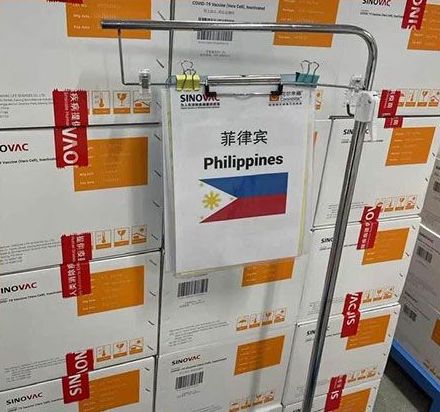
Sinovac is developed by Chinese company Sinovac Biotech and is the first vaccine to receive an emergency use authorization on February 22, 2021.
China donated a total of 600,000 doses on Febuary 28, 2021 and was used to vaccinate government officials and frontline workers to prepare the country for a nationwide vaccination program. As of today, the government has procured over 6 million doses of Sinovac.
As for its efficiency rate, it varies from country to country. In Turkey, it has an efficacy rate of 91% while in Brazil, it only had a 78% efficacy rate.
DOH has since made it clear that the Sinovac vaccine is safe since it satisfies the WHO's standard of 50% efficacy rate. The first batch of Sinovac doses that were bought by the government arrived on March 29, 2021[11].
Pfizer–BioNTech

The Pfizer vaccine was the first one to be administered to the public in December 2020. It has an efficacy rate of 95%, which made it the most sought-after vaccine in the country.
The first batch of donations consisting of 193,050 doses arrived on May 10, 2021 through the COVAX Facility. And on June 10, 2021, the Philippines received our biggest single-day vaccine donation to date[12].
With over 2.2 million doses arriving in our country, this will certainly accelerate the government's vaccination efforts. The Pfizer vaccine is also the first brand to be approved for children aged 12-15 years old[13].
Oxford–AstraZeneca
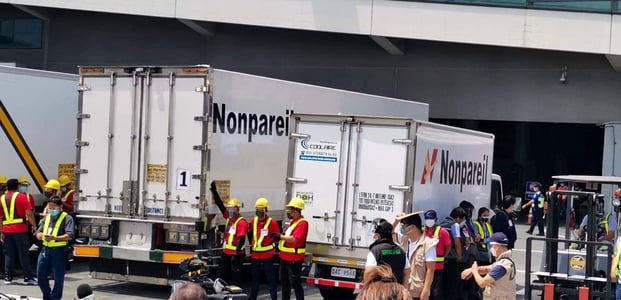
The Oxford-AstraZeneca vaccines first arrived in the Philippines on March 4, 2021 through the COVAX Facility. Consisting of 487,200 doses, this served as the second vaccine brand to be administered to the public.
As for its efficacy rate, it clocks in at 71% on the first dose and 83% on the second dose, making the Oxford-AstraZeneca one of the most effective vaccines out there.
A total of 2 million additional doses have also arrived in the Philippines on May 8, 2021, adding to the already stellar vaccine resource of the country[14].
Sputnik V
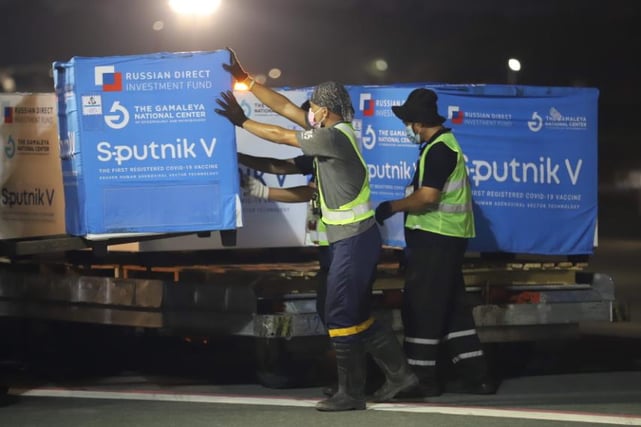
Russia has also developed their own COVID-19 vaccines in the form of the Sputnik V vaccine. In its early trials, it recorded an efficacy rate of over 90%, which makes it a viable weapon against COVID-19.
Fortunately, the government has already procured a total of 180,000 doses of the Sputnik V. The first three batches of 80,000 doses arrived on May 2021 and the latest batch 100,000 doses just arrived on June 11, 2021[15].
FAQs on COVID-19 Vaccines in the Philippines
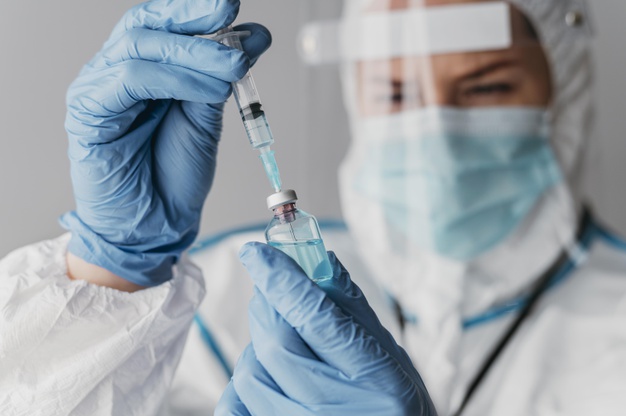
1. Has anyone caught COVID-19 after getting the vaccine?
Immunity from COVID-19 takes a few weeks to build up after you receive your shot. It’s possible to still get the virus and get sick even before or after you get vaccinated. This is why you’re still required to observe health protocols, like wearing your masks and practicing social distancing.
2. Do I still need the vaccine if I already had COVID-19?
Yes. Whether you’ve already had COVID-19 or not, you should get the COVID-19 vaccine. There’s no hard data yet on how long you’re protected from COVID-19 after recovering from it. And it’s possible that you can get the virus again if you skip getting the vaccine.
However, if you’re currently sick with COVID-19, you should wait until you have fully recovered before getting vaccinated.
3. What are the side effects of the COVID-19 vaccine?
Life-threatening side effects or reactions are rare. But the most common possible side effects of the COVID-19 vaccine include the following:
- Pain, redness, itchiness, or swelling at the injection site that may last for a few hours
- Fever
- Feeling weak or tired
- Headache
- Dizziness
- Diarrhea
- Nausea
If you experience any of these symptoms, inform and consult your healthcare professional.
Back to the main article: If I Get COVID-19, How Much Do I Need to Pay?
4. Is COVID-19 vaccination mandatory?
Currently, getting vaccinated against COVID-19 is not required for everyone—but it is highly encouraged. If you don't want to suffer from severe COVID-19 symptoms, then you should be vaccinated.
There's no way to tell how this virus can affect you. One person can be asymptomatic or experience mild illness while another can suffer severe complications that can even lead to death.
5. What should I do on my vaccination day?
- Proceed to your assigned vaccination site on your scheduled time slot wearing your face mask and face shield.
- Sign the consent form that you’re willing to be vaccinated and that you’re aware of the vaccine’s risks and benefits.
- There will be a brief Q&A with the doctor or medical personnel regarding your health condition and medical history. Be honest with your answers.
- You’ll get your vaccine shot.
- The medical personnel will encode your data and monitor you for approximately 30 minutes before you can leave.
- Wait for the announcement from your LGU regarding your second dose.
6. Can the private sector procure COVID-19 vaccines?
Yes. Private sector companies can procure COVID-19 vaccines for their employees, provided that they enter into tripartite agreements with the Philippine national government and the vaccine manufacturers.
Some Things to Remember on Your Vaccination Day
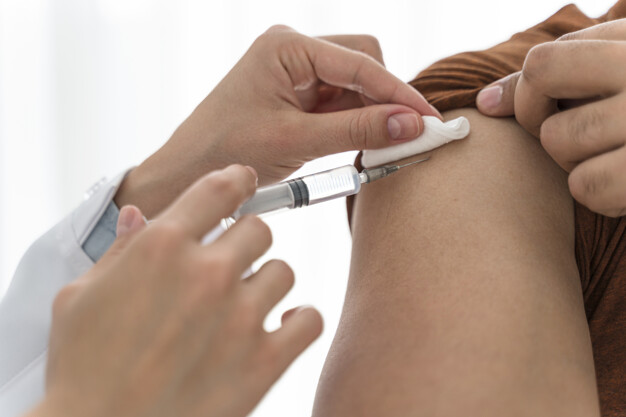
Keep in mind these tips for a safe and stress-free experience when you get a COVID-19 vaccine in the Philippines:
- Bring your own pen, as well as a government-issued ID with your address on it.
- Wear comfortable clothes to stay cool because most vaccination sites are not air-conditioned. And since you’ll be transferring from one seat to another, wear jeans or pants instead of shorts.
- Stay calm and relaxed. You won’t be able to proceed with the vaccination with elevated blood pressure.
- Continue wearing your face mask and observe social distancing.
Read more: Swab Test and Rapid Test Price: COVID-19 Testing Guide
Final Thoughts
All vaccines carry a risk of reaction. But know that these COVID-19 vaccines were found safe and effective in large-scale clinical trials.
While waiting for your turn to get vaccinated, stay safe and healthy, especially if you have underlying health conditions. Speak with your doctor to check if you can get the vaccine. If you're clear to get vaccinated against COVID-19, bring your medical clearance so that the doctor administering the vaccine will know your medical condition.
And before you believe anything you see online regarding the efficacy or side effects of a COVID-19 vaccine in the Philippines, do your own research. Learn as much as you can about each vaccine by consulting with medical professionals or visiting authority websites.
Disclaimer: This article is created for general information purposes only and does not substitute professional medical advice. Always consult your doctor or qualified healthcare professional regarding your questions and concerns about COVID-19 vaccination.

Sources:
- [1] COVID-19 Case Tracker (DOH website, 2021)
- [2] Philippines targets to reach herd immunity by 2023 (Inquirer.net, 2021)
- [3] Herd Immunity (Association for Professionals in Infection Control and Epidemiology)
- [4] The Journey of a Vaccine (National Institutes of Health)
- [5] FAQs: Emergency Use Authorization (DOH website)
- [6] PH rolls out COVID-19 vaccine drive with frontliners, gov't officials taking first shots (CNN Philippines, 2021)
- [7] Comorbidities under the A3 Category (DOH Website)
- [8] Vaccine price list circulating online not negotiated prices: DOH (Philippine News Agency, 2021)
- [9] FAQs: Vaccines (DOH website)
- [10] DOH: PhilHealth to cover those who experience COVID-19 vaccine side effects (ABS-CBN News, 2021)
- [11] First batch of purchased COVID-19 vaccines reach PH (CNN Philippines, 2021)
- [12] Over 3.2M COVID-19 vaccine shots arrive in PH (CNN Philippines, 2021)
- [13] Philippines to allow Pfizer vaccine for ages 12 to 15 years old (Rappler, 2021)
- [14] 2 million AstraZeneca COVID-19 vaccines arrive in PH through COVAX (ABSCBN News, 2021)
- [15] 100,000 more doses of Sputnik V COVID-19 vaccine arrive in PH (Inquirer.net, 2021)







